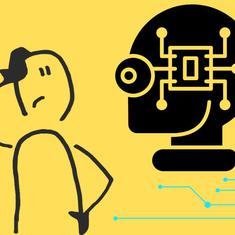India has the potential to cut 18% of its annual greenhouse gas emissions from agriculture and livestock, reports a team of researchers from the International Maize and Wheat Improvement Centre in the United Kingdom. The reduction potential represents 85.5 megatonnes of CO2 equivalent per year. And half of this – equivalent to the emissions from 30 million cars in a year (at 10,000 km per car annually) – could be achieved by implementing just three measures at no cost: efficient use of fertiliser, adoption of zero-tillage and management of water used in rice irrigation.
In fact, farmers stand to benefit with cost savings and increased yield. But because widespread implementation can be tough, the team suggests that the government should use a “carrot-and-stick” approach using a combination of policies, incentives and education to encourage farmers to adopt these win-win measures.
India is the third highest greenhouse gas emitter behind China and the United States and agriculture and livestock accounts for 18% of gross national emissions – the third-highest sector after energy and industry. Climate change is threatening India’s food security with frequent dry spells, heat waves and erratic monsoonal rainfall, adding to farmers’ woes.
As the global population continues to surge, developing countries will need to double food production by 2050. Consequently, scientists and policymakers are faced with the challenge of meeting the growing demand for food whilst also reining in on GHG emissions. Creating sustainable and climate-resilient agricultural systems has been highlighted as part of India’s plan to meet its ambitious pledge to the United Nations Framework Convention on Climate Change international treaty to reduce the emissions intensity of its GDP by up to 35% by 2030, compared to 2005 levels.
![Managing rice water by letting the field dry after irrigating rather than keeping rice fields continuously flooded will reduce methane emissions without compromising yield. Photo credit: Meena Kadri/via Flikcr/Wikimedia Commons [Licensed under CC BY 2.0]](https://sc0.blr1.digitaloceanspaces.com/inline/914085-Farm_Life_Village_India.jpg)
Using a bottom-up approach, the team collated large datasets from multiple sources including the government of India’s cost of cultivation survey (2002) and the 19th livestock census (2012) together with soil, climate and management data for each state, to calculate India’s agricultural and livestock carbon footprint. They also identified and analysed the potential of various mitigation measures along with their associated costs, from literature and by consulting experts.
Major greenhouse gas emitting states
The study estimated that in 2012, India’s annual GHG emissions from agriculture and livestock stood at 481 megatonnes of CO2 equivalent, of which 42% came from crop production and 58% was emitted from livestock. Cattle production was the highest source of emissions, followed by rice – which was the highest emitter among the crops with 52% of all crop-related emissions – and buffalo production.
“Rice is a water-loving plant” and unlike other crops, it “requires standing water in the field,” said agricultural systems scientist Tek Sapkota, lead author of the study, explaining that such conditions are ideal for methane-producing bacteria to produce methane, a gas with a global warming potential that is 56 times higher than that of carbon dioxide over a period of 20 years. It is also released as a by-product of bacterial fermentation in the digestive tract of cattle and buffaloes as well as other ruminants and is belched out by the animals.
Uttar Pradesh emerged as the top agricultural and livestock GHG emitter, followed by former undivided Andhra Pradesh (which included Telangana; hereafter Andhra Pradesh-Telangana) and Madhya Pradesh. Paddy rice emissions were highest in Andhra Pradesh, West Bengal and Assam mainly because these states have a larger area under rice cultivation. On the other hand, emissions from buffalo production were highest in Uttar Pradesh with Rajasthan and Andhra Pradesh coming second and third, respectively and were attributed to the relatively large livestock population in these states.

Top climate-friendly mitigation measures
The top three cost-effective mitigation measures (without considering additional income from yield increases) with the potential to reduce about 9% of India’s 2012 agricultural and livestock GHG emissions are using nitrogen fertilisers more efficiently, adopting zero-tillage farming and improving the management of rice water, which can save Rs. 6500, 4200 and 770 per tonne of CO2 equivalent, respectively.
Past studies suggest that India’s nutrient-use-efficiency is only about 30% when compared with the efficiency of other countries. The main reasons are uneven and inefficient methods of fertiliser application combined with overreliance on one form of nitrogen, according to Sapkota.
“Fertiliser recommendation (we call it blanket recommendation) in India is largely based on the response data collected in one research station to represent a large geographic area,” explained Sapkota. “But individual farmer’s fields are different in terms of their nutrient supplying capacity. Applying fertiliser following such blanket recommendation results into over-application in some places and under-application in others. Further, with the belief to get more yield, farmers often apply more fertiliser nitrogen than actually required.”
He said that more than 90% of the nitrogen is broadcast on the surface and more than 80% is applied in the form of urea. Both of these factors result in a large loss of nitrogen to the atmosphere through volatilisation.
“India can increase fertiliser N [nitrogen] use efficiency by promoting a site-specific nutrient management approach, replacing urea with other sources of N, discouraging broadcast application, encouraging drill application of nutrients, fertigation (applying fertiliser with irrigation) etc.,” suggested Sapkota.
Zero tillage (also known as no-till farming) is a technique where farmers minimise disturbing the soil by tillage and in doing so, they reduce emissions from fuel that would have been consumed for tillage operations. It can be used in the cultivation of rice, maize, cotton and sugarcane.
Managing rice water by letting the field dry after irrigating rather than keeping rice fields continuously flooded will reduce methane emissions without compromising yield, said Sapkota. “This technique also requires less energy for water pumping where rice field is irrigated using groundwater,” he added.
When the researchers considered the increased yield benefits from adopting all of the possible mitigation measures, the top three cost-effective measures were supplementing green fodder to ruminant diets, vermicomposting (composting using worms) and improving the diet of small ruminants.
What this means is that although there is a cost to adopt them, with vermicomposting being the costliest, these measures are beneficial in the long run because of increased yield. However, despite their attractiveness, Sapkota points out that their net mitigation potential at the country level is very low.
Challenges in adoption
In spite of the cost benefits of the top three measures, these win-win measures have not been implemented on a wide-scale. As a result, the researchers recommend that the government should consider employing a “carrot-and-stick” approach to expand their adoption.
“Farmers’ adoption of the technology largely depends on the socio-economic and political environment, for example, subsidy, incentive mechanisms, farmers’ level of awareness, their willingness to contribute on the issue of public interest such as emission reduction and so many things,” said Sapkota. “But the government can promote these by means of appropriate policy, incentive mechanisms and institutional setup.”
Targeted subsidies should be provided by the government, said Sapkota, such as “providing irrigation subsidies to those who have laser-leveled their field,” for example. Counter-productive policies should be avoided, he adds, citing the example of heavy subsidies provided by the government to nitrogen fertilisers and not others, which has “encouraged farmers to use more nitrogen without adequately balancing it with other nutrients which are not subsidised.”
Austin Devakumar, a professor at the University of Agricultural Sciences in Bengaluru, who has also quantified the carbon footprint of major crops cultivated in India, said that the “major issue is the implementation of available technologies, for which adequate dissipation of knowledge among the farming community is essential as well as additional resources.”
![In past few years, pesticides and their usage has come under serious scanner in India. Photo credit: Pradnyaalimakar/Wikimedia Commons [Licensed under CC BY 4.0]](https://sc0.blr1.digitaloceanspaces.com/inline/914085-1280px-Farmers_Life_style_.jpg)
Since the knowledge needed to employ these measures such as rice water management “has not reached the grass root levels,” additional “investments and policy interventions are required and this is where cost is involved,” elaborated Devakumar, who was not involved in this study.
“Efficient fertiliser use basically comes from the right type of fertilisers for example slow release N [nitrogen]-fertilisers,” which, he noted, are expensive. Also, zero-tillage will take a period of time to show benefits and farmers may need to be patient. As “distressed farmers are least bothered about the environmental benefits,” incentives will be needed to adopt these practices, Devakumar added.
Sapkota acknowledged that it is not easy to implement the measures. “It requires consolidated efforts from the government, private sector, non-government organisations, farmers and farming communities and so on.”
This article first appeared on Mongabay.










